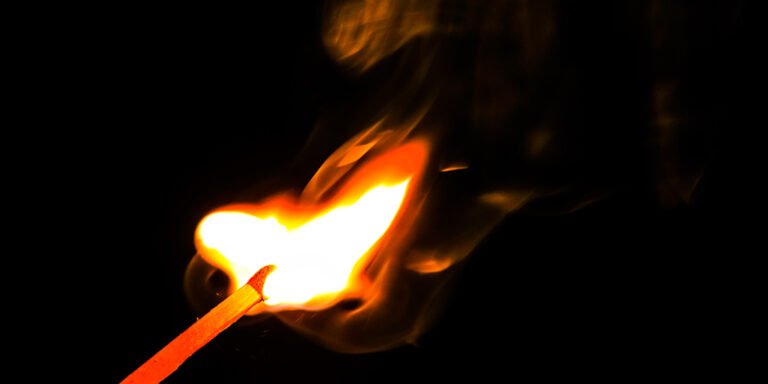We live in a fascinating world of awesome beauty and amazing order. Dazzling sunsets, cascading waterfalls, revolving planets, glittering stars, and other wonders have captivated man’s attention and triggered much curiosity. When did these marvels come into existence? How did it happen?
There are ultimately only two alternatives. Either all things have developed from nothing by natural, observable Darwinian processes operating in the world presently or they were initially created by an infinitely powerful and all-wise God. Let us examine one of the most important questions of our day. Does strong evidence exist for creation or for random chance evolution? If so, what is that evidence?
The universe gives powerful evidence for Creation.
The universe in which we live is a vast, orderly, majestic array of stars, planets, nebulae, and galaxies of incredible immensity! This earth, as well as the whole universe, is not in chaos; it operates in orderly patterns and is controlled and directed by natural laws.
Who made these laws? The fact of law requires a lawgiver. We know that every building must have a builder. Therefore we know that the universe, the greatest building of all, had to have an omnipotent Builder. “For every house is builded by some man; but he that hath built all things is God” (Hebrews 3:4). “The worlds were framed by the word of God” (Hebrews 11:3). “The heavens declare the glory of God; and the firmament sheweth his handiwork” (Psalm 19:1).
The marvelous world of living things gives powerful evidence for Creation.
Scattered all over the world are countless numbers of remarkable creatures that are extremely complex and well organized. These creatures are highly specialized and are able to adapt to their environments. All function well where they are and reveal no need or “desire” for macro evolution of any kind.
Consider the amazing bombardier beetle. This odd creature has a remarkable defense that enables it to escape from its enemies. With explosive force, it can eject a fluid from twin combustion tubes in its abdomen that turns into a hot poisonous smoke. A pop can actually be heard as gases shoot out! The bombardier beetle can repeat these explosions fifteen to twenty times in just a few minutes. He can swivel his twin “cannons” 360 degrees, and he never misses his target!
Consider also the woodpecker, who resembles a miniature jackhammer. How does he ram his bill into a tree over a thousand times a minute without breaking his beak and smashing his brains? How does he manage to reach inside the tree and pull out bugs for his lunch?
First of all, a woodpecker must have a special kind of bill. It must be strong and sharp enough to dig into a tree without folding up like an accordion. He also needs to have a firm grip on the tree into which he is drilling. He has very stiff tail feathers, which he uses to brace himself against the tree, and specially designed feet with four clawlike toes. Two toes point forward and two toes point backward—an arrangement that allows him to get a good, tight grip.
His head is equipped with shock absorbers! These shock absorbers cushion the blows so that the skull and brain of the woodpecker suffer no damage.
Another testimony to God’s marvelous creation is the amazing defense system of a little water beetle named Stenus Bipunctatus. When his enemy, the water strider, pursues him, he squirts out a charge of liquid detergent from a pair of abdominal glands. As the detergent breaks the surface tension of the water, a small wave is produced that propels the beetle forward at much above normal speed. The water strider, if he skids into the detergent-treated area, immediately sinks because of the broken surface tension.
To believe that such incredibly complex functions and traits of these creatures result from genetic accidents and gradual evolution is unbelievable. What good are partly developed beaks on woodpeckers or partially developed combustion tubes on bombardier beetles? Such abnormalities are nowhere found either in living creatures or in fossils. In order for them to serve their intended purpose, they had to be created perfectly and suddenly.
This is not to say that no minor adaptation ever takes place within species. This is one of the marvels of creation. Each species has designed within them the ability to adapt to changes in climate or other environmental changes. Breeders can develop the traits they want in a species by careful interbreeding. Because of this, you have many kinds of cattle within the same species. Clydesdales are very different from miniature horses.
The marvels of design and perfect adaptation in nature bears witness to the fact of Creation.
The existence of instinct in nature testifies for Creation.
Everywhere we look, instinct is evident in nature. Instinct teaches a bee to build a perfect honeycomb and the bird to build its own characteristic nest the first time it tries without previous experience. Instinct unerringly guides the whale, the bird, and monarch butterfly thousands of miles in their long and amazing migrations, unguided, where they have never been before.
Upon reaching maturity, the eel migrates thousands of miles to reach spawning grounds in the Sargasso Sea near Bermuda. Eels from as far away as Europe and Labrador make their way to these deep waters to spawn and die. The baby eels that are born here make their way back across uncharted oceans to the very same shore, river, or inlet in which their parents had lived.
This mystery, which has baffled scientists for years, gives powerful evidence of intelligence far beyond what these animals themselves possess.
The source of this intelligence is the Creator, who fully equipped all forms of life and enabled each to survive in its own environment.
The Bible says, “But ask now the beasts, and they shall teach thee; and the fowls of the air, and they shall tell thee: or speak to the earth, and it shall teach thee: and the fishes of the sea shall declare unto thee. Who knoweth not in all these that the hand of the Lord hath wrought this?” (Job 12:7-9).
The fossil record gives powerful support for Creation.
The geological record of fossils does not reveal a progression of development that crosses over the barrier between species. In spite of all the efforts of trained observers, not one change of species into another species is on record. More than 250,000 different fossil species are in our museums today. If inter-species evolution took place, thousands upon thousands of these fossils should be intermediate or transitional forms showing this.
If apes evolved into man, invertebrates into fish, and reptiles into birds, a whole series of intermediate fossils would show this to be true. The fact is that such transitional forms are nonexistent in the fossil record. Marine creatures appear as marine creatures, monkeys appear as monkeys, and people appear as people.
For all these species to have evolved from common lower-life forms during millions of years of time without leaving a trace is not physically possible. Chimpanzees and mankind remain distinct and separate, and the fossil record continues to widen the gulf between man and apes.
Instead of the fossil record giving scientific evidence for evolution, it gives powerful evidence for a Creator who brought all things into existence at the beginning of time. “In the beginning God created” is the best explanation for the origin of species. The universe and the entire world of living things have not come about by some random chance process of evolution or by a big bang.
The only observable form of evolution we see today is micro-evolution within species. The fossil records do support that all horses have a common ancestor. The same is true of humans. The fossil record also confirms the Biblical account of a worldwide flood in Noah’s day. Genesis 6-9 tell of this catastrophe, by which God brought judgement upon the earth He created.
A global flood explains the abundance of sedimentary rock on and beneath the surface of the earth. In this rock, geologists find the remains of vast numbers of beautifully preserved creatures and plants. All over the world these specimens bear unmistakably clear testimony of an overwhelming flood of water that sealed their fate.
You will need to decide
Those who are unwilling to believe the truth may spend a lifetime in research laboratories, attempting to document their erroneous persuasions, but to no avail. The simple fact of Creation cannot be altered or destroyed.
The Bible says, “Because that, when they knew God, they glorified him not as God, neither were thankful; but became vain in their imaginations, and their foolish heart was darkened. Professing themselves to be wise, they became fools” (Romans 1:21, 22).
These words accurately describe the condition of man apart from a personal relationship with the Creator, God. They simply will not believe, whatever the evidence.
We were created to bear God’s image, but because of our sinful nature, we need His mercy and grace to save us from our sins and make us holy. Through faith in God’s Son, the Lord Jesus Christ, we can become a new creation and thereby honor our Maker.
The Lord invites you to enjoy new life in Him by accepting His gracious offer of salvation today. “But as many as received him, to them gave he power to become the sons of God, even to them that believe on his name” (John 1:12).
—Melvin R. Weaver











One Response
Evolution is “False Science”. It is best disproven by Science. Does your car fix itself? Entropy is the opposite of evolution.
“The Parable of the Evolution of the Automobile “
Over Billions of years , iron particles formed themselves into iron rimmed wagon wheels about 1800 AD.
Iron atoms formed themselves into steam locomotives.
About the year 1900 the Model T Ford created itself.
There was no factory with intelligent beings . There was no Henry Ford, the Creator. Ford cars just rose out of the ground like trees.
Look at the development of improved cars. The Model T became the Model A Ford by Evolution.
Evolution is a way to say there is no need for a Supreme Creator.